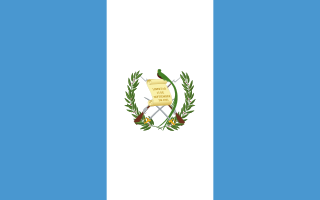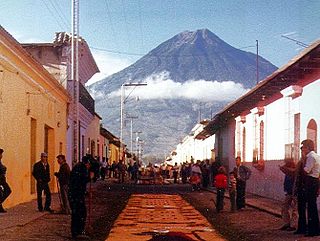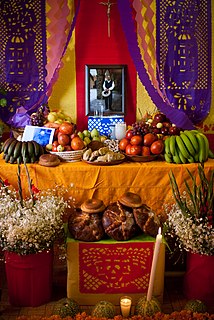 W
WThe Días Patrios, or Patriotic Days, are national holidays celebrated in Guatemala commemorating its struggle for independence. These include:September 15: Independence Day October 20: Day of the 1944 Revolution.
 W
WHoly Week in Guatemala is celebrated with street expressions of faith, called processions, usually organized by a "hermandad". Each procession of Holy Week has processional floats and steps, which are often religious images of the Passion of Christ, or Marian images, although there are exceptions, like the allegorical steps of saints.
 W
WThe Museo Nacional de Arte Moderno "Carlos Mérida" is a national museum of modern art in Guatemala City, named after Carlos Mérida.
 W
WAn ofrenda is a home altar with a collection of objects placed on a ritual display during the annual and traditionally Mexican Día de Muertos celebration. An ofrenda, which may be quite large and elaborate, is usually created for an individual person who has died and is intended to welcome them to the altar setting.
 W
WThe resplendent quetzal is a bird in the trogon family. It is found from Chiapas, Mexico to western Panama. It is well known for its colorful plumage. There are two subspecies, P. m. mocinno and P. m. costaricensis.
 W
WThe Rabinal Achí is a Maya theatrical play written in the Kʼicheʼ language and performed annually in Rabinal, Baja Verapaz, Guatemala. Its original name is Xajoj Tun, meaning "Dance of the Tun" instrument also known as wooden drum. This is one of the few surviving performance pieces from before colonization. It takes place every year on January 25 and involves the entire community of Rabinal. A combination of movement, song, and instrumentation meld the piece together. This performance has been a part of Rabinal history for centuries, and continues to be a part of the culture today. The story of the Rabinal Achí centers on a historical feud between Rabinal and Kʼicheʼ, two neighboring cities. Colorful costumes and wooden masks are used to differentiate the characters as they play out their roles in the song-dance-drama.
 W
WTecun Uman was one of the last rulers of the K'iche' Maya people, in the Highlands of what is now Guatemala. According to the Kaqchikel annals, he was slain by Spanish conquistador Pedro de Alvarado while waging battle against the Spanish and their allies on the approach to Quetzaltenango on 12 February 1524. Tecun Uman was declared Guatemala's official national hero on March 22, 1960 and is commemorated on February 20, the popular anniversary of his death. Tecun Uman has inspired a wide variety of activities ranging from the production of statues and poetry to the retelling of the legend in the form of folkloric dances to prayers. Despite this, Tecun Uman's existence is not well documented, and it has proven to be difficult to separate the man from the legend.
 W
WWorry dolls are small, mostly hand-made dolls that originate from the highland indigenous people of Guatemala but are also found in Mexico.